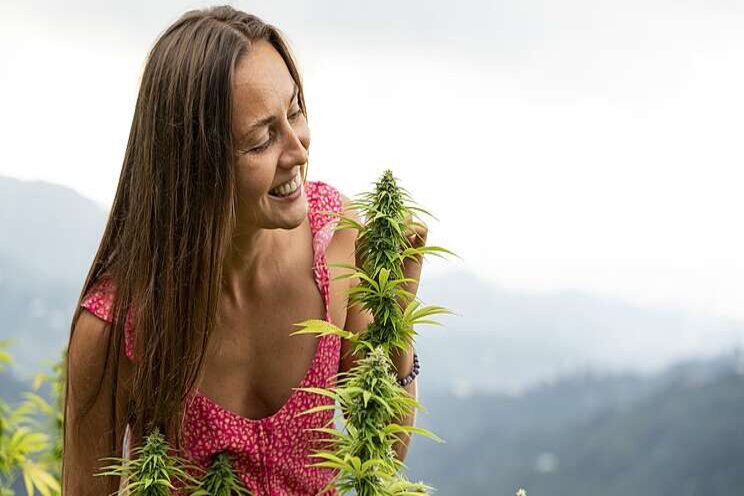8 pros and cons of cannabis farming
Added on 18 March 2021


Source: pixabay.com
1. Pro: There Is Potential For Growth
The world is facing an increasing demand for cannabis due to the diverse applications of the plant. From medicine to clothing, various segments are placing higher demand for cannabis, making it a potentially attractive cash crop.
The body of research to understand the complete scope of applications of cannabis is rapidly expanding. Scientists are constantly trying to use the plant as a sustainable and environmentally friendly substitute to several materials due to its versatile properties. And statistics suggest that the success of even a small portion of these studies could indicate a steep elevation in demand for the crop.
2. Pro: Feasible For Vertical Farming
Vertical farming systems are becoming the go-to choice to receive year-long yields and produce purely organic crops with a higher yield. Cannabis is one of the best crops to practice vertical farming efficiently and achieve amazing outcomes and profits. It can reduce the carbon footprint and provide a sustainable solution to compete with the increased demands.
Understanding the particulars of vertical cannabis farming, such as what types of seeds, when to harvest cannabis, nutrient requirements, etc., can improve yield quality and quantity. It can match the demands from various sectors, including medicine, where quality is of utmost importance.
3. Con: Fierce Competition
The legalization of cannabis across several states has enabled rapid expansion in the opportunities for cannabis growers. Cultivators see that the increasing need for commercial hemp can be an excellent opportunity to produce and sell more. Products such as CBD oil are in high demand, and more and more farms are crafting them to induce into the mainstream market for good profits.
But, this essentially means that cannabis cultivation is facing heavy competition, especially in the CBD segment. One way to navigate this challenge is to consider alternate market opportunities like hemp products, including hemp seed oil for wellness and beauty products.
4. Con: Environmental Concerns
The environmental implications of increasing cannabis cultivation are an essential point to assess. Research shows that cannabis cultivation can degrade the quality of land, cause increased water usage, and severely impact global climate change. The legal status of cannabis also causes increased cultivation in undetectable areas such as tribal lands. These practices tend to affect the wildlife in the area.
5. Pro: It Is Quite Easy To Grow
Cannabis is a versatile plant suited for growth in varying climatic conditions. The plant can survive most climates, except very extreme conditions, and provide a significant yield with fewer resources.
Autoflowering seeds have eliminated the light dependency of cannabis, apart from making them more adaptable to temperature and humidity variations. They have also reduced the plant life cycle, increasing the number of crop chains possible in a year for improved yield. With the right quality of seeds and proper care, cannabis can be an easy crop to grow, even for novice farmers.
6. Con: Harvesting Can Be Challenging
While cannabis is quite an easy plant to grow with basic farming knowledge, harvest and post-harvest processes can be challenging. Most farmers struggle to achieve optimum yield with a good balance of potency and quantity. Several factors like nutrition deficiency, weather, humidity, light exposure, pest infestations can drastically influence the yield properties. Further, post-harvest processing for extracting CBD oil can cause further problems.
Purchasing good quality equipment to support proper post-harvest preparation can eliminate this problem. Also, improving knowledge about the optimum storage conditions and techniques and investing in the right technology to enhance the buds' lifecycle can solve these problems.
7. Pro: It Is Profitable
The increasing scope of research to understand the true potential of cannabis has encouraged its growth in various sectors. From medicine to beauty and textile, diverse sectors invest resources to leverage the value the plant can create in their area.
With this in mind, the average value of cannabis products such as CBD oil, extracts, the hemp seed oil is also rapidly increasing. Large corporations are prepared to establish pre-harvest contracts with cannabis farms to ensure reduced wastage of this time-sensitive crop. The value of cannabis-based products will increase further in the future, which exhibits the vast potential the segment holds.
The laws that embody cannabis cultivation can be a considerable challenge for emerging in this segment. Cannabis remains illegal at the federal level, but state laws are applicable for cannabis cultivation in each region. While some states have liberally allowed cannabis cultivation and processing, many have strict limitations and regulations. A few states still classify it as an illegal substance.
Also, these state laws and regulations are rapidly evolving to reduce misuse of the plant. Therefore staying updated with the policies, mandates, and license requirements are crucial to run a successful cannabis farm. Thorough research on the state laws and policies can ensure you are on the right side of the law.
Farming cannabis comes with certain risks applicable to most crops. Several factors can affect the quality and quantity of produce, such as weather, nutrient availability, labor costs. The changing landscape of cannabis laws further increases the challenges in cultivating the plant. But the rapid rise in demand and value for the crop worldwide suggests that the cultivation trend will evolve for the better in the years to come.
By Rebecca R
Header Image by DimStock from Pixabay
Source:
https://www.conserve-energy-future.com/advantages-disadvantages-vertical-farming.php
https://www.igrow.news/igrownews/qhmbt70jqgjeptbszhmg5ks2xkhbpi
https://www.thebalancesmb.com/what-you-should-know-about-vertical-farming-4144786
http://cascadebusnews.com/the-pros-and-cons-of-running-an-industrial-hemp-farm/
https://whatishemp.com/hemp-pros-and-cons/
https://www.apotheca.org/blog/hemp-farming-methods-the-pros-and-cons
https://choosehemp.weebly.com/pros-x-cons.html
Source: Goedemorgen
More news















